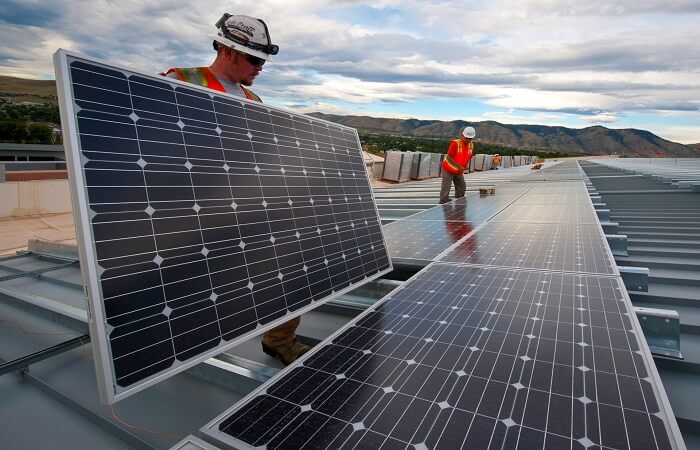
Installing a solar panel system on your home this year could earn you 26% of the total cost.
Have you been thinking about investing in solar panels? Do you want more information before you make the decision? Are you wondering how do solar panels work anyway?
Find out more about solar panel science here. You’ll learn about how a solar panel system works and the different types of solar panels. You’ll be ready to make an informed decision about the best solar panels for your home.
How Do Solar Panels Work? The Big Picture
Generating electricity from your solar panel system is a multi-step process. First, a solar company installs the panels on your roof. The facing direction and angle of the panels will help you maximize your energy production.
Then, sunlight hits the solar panels and generates a DC electrical current.
The electrical current flows through a conductive wire to your inverter. The inverter converts DC electricity to AC. AC is the type of electricity that powers the appliances in your home.
The AC current flows through another wire into your electrical panel or breaker box. The breaker box directs electricity to any appliances that need it.
If you don’t use all the electricity you generate, it flows through your utility meter into the electrical grid. This makes your meter run backward to credit you for producing extra electricity. This is very useful when you take into account the time-of-use rates.
You can also choose a hybrid system for the extra electricity. A hybrid system uses batteries to store the energy.
Solar Panel Science
Solar panel technology generates electricity using the photovoltaic effect. When particles of light called photons hit a photovoltaic cell, they release electrons. This creates an electric current.
A solar panel is made from many photovoltaic cells linked together.
Each photovoltaic cell has two layers of semiconducting material. Silicon is the most common semiconductor for solar panels.
Manufacturers add phosphorus to the top layer of silicon and boron to the other. The phosphorus adds electrons with a negative charge to the silicon layer. Adding boron reduces the number of electrons and makes a positive charge.
The negatively charged electrons jump to the positively charged material. The movement of these electrons creates an electric field between the layers.
When photons from the sun hit the negatively charged layer, they knock an electron free. The electron can’t pass through the electric field. Instead, it moves toward conductive metal plates around the outside of each cell.
The loose electrons that hit the conductive metal plates flow into wires. They can then flow like any other source of electricity.
Types of Solar Panels
Many different solar panels are on the market. Almost all of them will fit into one of three basic types: monocrystalline, polycrystalline, and thin film.
These types of solar panels use the photovoltaic effect to produce electricity. Differences in how they’re constructed affect how efficient they are.
Each photovoltaic cell in a monocrystalline solar panel has a single silicon crystal. Using a single crystal lets electrons flow through the cells more easily. This makes monocrystalline panels more efficient than other types.
Polycrystalline solar panels have cells with multiple silicon crystals. They’re less efficient than monocrystalline panels. The electrons don’t travel as easily.
Thin-film solar panels have a thin layer of photovoltaic material over a solid surface like glass. The panels are lightweight, and some are flexible. However, thin-film panels are the least efficient type.
Choosing the Best Solar Panels for Your Home
Now you can answer the question, How do solar panels work? Understanding how a solar panel system works makes you a more informed consumer.
You can compare the different types of solar panels with a reliable solar company. You’ll be ready to choose the best solar panels for your home.
